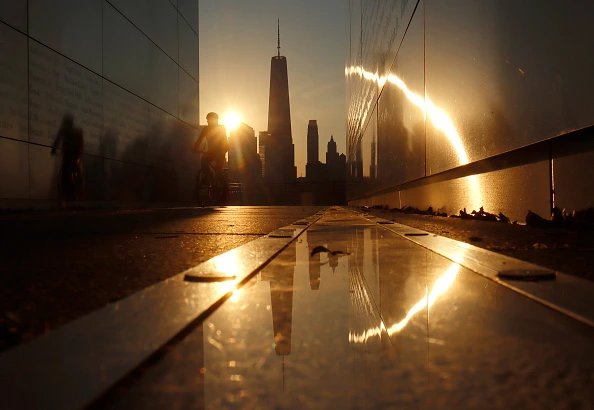
As our planet faces the catastrophic consequences of climate change, increasingly hot cities must take practical and sustainable measures to cool down the urban environment and mitigate the negative effects of rising temperatures and, especially, the occurrence of extreme heat.
The latter is of course only one of the many challenges arising from or exacerbated by climate change but is a particularly daunting one, not only but especially for cities.

Cities are known to amplify the effects of rising temperatures, due to the absorption and retention of solar radiation by buildings, pavement, and other infrastructure, limited green spaces, reduced natural ventilation, as well as heat-generating human activities within them. Urban areas often see temperatures rise 6°C (10°F) hotter than the surrounding suburbs and rural areas, with some urban localised areas experiencing significantly higher temperatures than others, resulting in the so-called urban heat island effect.
Effects within a city can vary greatly depending on local environmental conditions, not least, of course, the background climate of the area in which a given city is located. However, there is no doubt among experts that extreme heat is an increasingly urgent problem for an increasing number of cities.
The extreme heatwaves of 2022, which affected hundreds of millions of people around the world, illustrated this, as do numerous events this year, be it because of locally reached extreme temperatures, their duration and/or their unusually early occurrence in the season.
Cities are beating records as they hot up
The beginning of June was the hottest on record, with global average air temperatures for the first time being more than 1.5°C higher than before industrialisation, and this is in all likelihood just a taste of what is to come, while reports of particular incidents, such as the recent scorching heatwave sweeping northern India, underline as if any further reminder were needed, the grave consequences of what we are up against.
Extreme heat is not only uncomfortable. It also poses significant health risks and can, and often does, result in fatalities. And it has massive negative impacts on economic productivity, energy systems, ecosystems and transport infrastructures, and disrupts and – in a worst-case scenario – devastates social life.
Last year, a study published in the journal Science Advances found that heatwaves propelled by climate change had cost the global economy at least $16trn since the early 1990s. The study found that a large part of these costs is incurred in the poorest and least polluting countries in the world, but, as particularly recent years have made brutally clear, they are not, of course, limited to these.
An example is London’s heatwave in July 2022, which led to several fires and destroyed or damaged numerous buildings across the capital, making it the busiest day for the city’s fire brigade since the Second World War.
The already apparent and anticipated consequences of more frequent, intense and prolonged periods of high temperatures and all that goes with them, not only but especially for cities, are, pardon the pun, literally chilling. However, at the same time, or rather for this very reason, it is important to look at what cities can do – and are already doing – to cool down the urban environment and mitigate the negative effects of extreme heat. Demolishing and rebuilding cities from scratch to suit our warming climate is impractical.
Urban heat solutions
The solution lies in retrofitting and adapting existing urban areas in ways that effectively reduce heat, combat urban heat island effects, and empower people in cities to better cope with the challenges of a warming climate. Strategies range from traditional and nature-based approaches to innovative new technologies.
They include interventions at different scales, from individual buildings and public spaces to large-scale urban planning initiatives, and importantly, they extend beyond physical investments and include investing in cities’ social fabric and infrastructure.
Traditional and nature-based approaches address urban heat by leveraging blue and green infrastructure and incorporating knowledge accumulated over centuries from countries and regions with extensive experience in coping with the heat.
They involve drawing on design elements that reduce heat absorption and promote natural cooling, such as lighter and permeable surfaces and fewer heat-absorbing building materials while also considering the importance of urban design, buildings’ layout and orientation, as well as architectural features such as patios and courtyards, shading devices, and strategically placed windows in facilitating natural ventilation and creating cooler, more comfortable environments.
Vegetation plays a crucial role as well, with the creation of green spaces, rooftop gardens and tree-lined streets providing shade and evaporative cooling. Additionally, the integration of blue infrastructure significantly contributes to addressing urban heat. Blue infrastructure encompasses a range of strategies that utilise water elements, such as urban wetlands, waterways lakes, and ponds, as well as smaller water-based features like water gardens or fountains, offering localised heat relief and creating comfortable microclimates within urban environments.
In addition to these traditional and nature-based strategies, novel technologies specifically designed to reduce and cope with urban heat challenges play a vital role. Cool pavement and cool roofs, for instance, utilise advanced materials with high solar reflectance that minimise heat absorption and maintain lower surface temperatures while smart shading systems and dynamic facades incorporate intelligent technologies to create more comfortable indoor environments.
Vertical gardens and green walls providing insulation and evaporative cooling effects are another, albeit not always successful, approach to tackle or mitigate urban heat that has received increased attention in recent years, as are cool air misting systems, which, by releasing fine mist into the air, help lower ambient temperatures and provide relief from excessive temperatures during hot summer months in outdoor areas.
Benefits of intervention
The advantage of these and other interventions is that they not only combat urban heat but also provide additional benefits; for example, by creating more attractive urban environments or improving energy efficiency. However, it is important to remember that tackling urban heat involves more than just taking physical measures.
Social factors such as social infrastructure, social capital, and social equity are crucial considerations in addressing the problem of urban heat, as demonstrated by Eric Klinenberg’s seminal study on the 1995 heatwave in Chicago, which tragically resulted in more than 700 deaths. Investing in the social fabric of cities, that is, fostering strong social networks, improving – and promoting equal access to – resources and services, and raising awareness of the dangers associated with heat are hence a crucial component of combating urban heat, and merit as much attention as retrofitting and adapting the built environment.
This is also recognised to varying degrees in cities’ political arenas. One example is Cool Neighborhoods NYC, New York City’s first citywide strategy to reduce extreme heat and its impact on residents, which was launched in 2017 and recognised both the importance of social cohesion and community networks as well as equity concerns.
Likewise, involving citizens in the development of plans and interventions to ensure these are responsive, inclusive, and aligned with residents’ needs and aspirations is key. As with discussions on climate change adaptation in general, urban heat mitigation efforts tend to be driven by politicians, experts and the private sector – with not much of a say for residents, let alone disadvantaged residents, but this does not have to be the case. Initiatives such as Richmond‘s climate change planning initiative, in which urban heat is a key concern, show that engaging communities, promoting participation and harnessing local knowledge can help to develop more effective and inclusive strategies.
Such initiatives, as well as the bold steps already taken by city governments to make built environments more sustainable and address the challenge of increasing heat and its public health impacts, for instance, those involved in the C40 Cool Cities Network, provide a reason for hope. The flip side of the coin, however, is that there are also cities that do not act nearly as quickly and boldly as they should and could, and that by no means all measures taken to cool down urban environments are even remotely sustainable.
One of the most striking reactions to the dangerous warming of our planet is the explosive growth of air conditioning, sometimes, as in Qatar, even outdoors, the problem being, of course, that it makes the problem worse. Cities that do not whenever possible fight this trend, or even fuel it despite possible alternatives to provide temporary cooling and comfort, are not cool.
‘Cool cities’ on our increasingly hot planet, are, to pick up on a book by renowned political theorist Benjamin Barber, those that lead the way as “agents of sustainability and resilience”, that is, that not only address the symptoms but also the causes of the problem at hand and use whatever influence they have to make a critical difference in combating climate change.
[Read more: Which cities are most affected by climate change?]






